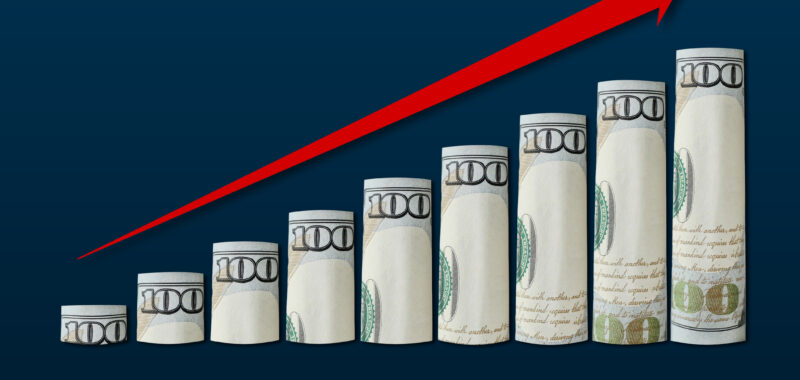Omega Healthcare Investors’ big-time dividend has helped drive healthy total returns.
Omega Healthcare Investors (OHI -0.41%) is far from a household name. It’s a relatively small real estate investment trust (REIT) focused on investing in the long-term healthcare industry. It invests in skilled nursing and assisted living facilities operated by other healthcare companies.
The healthcare REIT’s investments have paid big dividends for its investors throughout the years. It’s one of the five best-performing REITs over the last 20 years, generating a total return of more than 1,500%. It has also delivered peer-leading returns in the previous three-, five-, and 10-year periods. A big driver is Omega’s high-yielding dividend, currently at 6.5%.
Built for income
Omega Healthcare has invested in roughly 900 long-term healthcare properties across the U.S. and U.K. About 70% of its investments are in skilled nursing and transitional facilities, while the other 30% are in senior housing. Meanwhile, the bulk of its portfolio, 83.3%, consists of rental properties that other healthcare companies operate under long-term triple net (NNN) master leases. It also has real estate loans, accounting for 12.3% of the total; real estate tax and ground leases, 1.6%; and other investments, at 3%.
NNN leases produce very stable rental income. Tenants are responsible for all property expenses, including routine maintenance, real estate taxes, and building insurance. Real estate-backed loans and ground leases also produce very steady income.
Omega Healthcare pays out almost all its cash flow to investors via dividends. Its dividend payout ratio was 99.2% of its funds available for distribution (FAD) and 94.7% of its adjusted funds from operations (FFO) in the most recent period. Unlike many REITs, Omega has opted not to retain much of its cash flow to fund new investments. Instead, it uses stock sales and its balance sheet flexibility to fund new investments.
The REIT can get away with using higher-cost outside capital to fund its growth because the properties it acquires have high investment yields compared with other healthcare real estate. That enables it to make accretive acquisitions even at a higher cost of capital. For example, its average investment yield on a skilled nursing facility has been around 9.4% over the past five years. That compares with a mid-single-digit rate for medical office buildings and life science facilities. With a higher investment yield, the REIT can generate more income from its property investments.
Steady growth
Omega Healthcare Investors has grown steadily over the years by investing in expanding its portfolio. It has made $13.6 billion of new investments since 2010, including acquiring properties, originating mortgages, and investing in capital projects. These investments have grown its overall adjusted FFO at a 13.2% compound annual rate since 2009 while increasing its adjusted FFO per share at a 6.4% annual rate since 2004.
The REIT’s growing portfolio of income-producing healthcare investments has enabled it to increase its dividend over the long term. During the past two decades, it has grown its payout at a 7.1% compound annual rate. However, dividend growth has slowed considerably in recent years, to 0.1% in the past five years, with no dividend increases since 2020. Still, simply maintaining its dividend since the pandemic makes it an outlier among healthcare REITs, as many of its peers have had to cut their payouts in recent years because of challenges facing the sector.
Omega Healthcare is in a solid position to continue growing in the future. The company has a conservative balance sheet with low leverage, minimal near-term debt maturities, and ample liquidity. Its leverage ratio is currently around 4.76, which is within its 4.0-5.0 target range.
The company is using its balance sheet capacity, stock sales, and non-core property sales to continue making new investments. It closed nearly $650 million of new investment through the end of July, including real estate acquisitions, real estate loans, and capital investments. Many of its investments had initial annual cash yields of 10% or more. Those investments will supply the REIT with more income to cover its high-yielding dividend.
Omega should have no shortage of future investment opportunities. Despite being the largest owner of skilled nursing facilities, it only owns 5% of the market. That gives it a long growth runway to continue making accretive new investments, especially considering the aging of the population, which will drive the need for even more of these facilities in the future.
An enticing income option
Omega Healthcare Investors has been a very enriching investment over the years. The healthcare REIT has cashed in on the high investment yields for skilled nursing facilities, which has helped grow its income and allowed it to continue paying a hefty dividend. With more growth ahead, the REIT should be able to sustain its payout in the future, making it an alluring option for those seeking a lucrative passive income stream.
Matt DiLallo has no position in any of the stocks mentioned. The Motley Fool has no position in any of the stocks mentioned. The Motley Fool has a disclosure policy.

